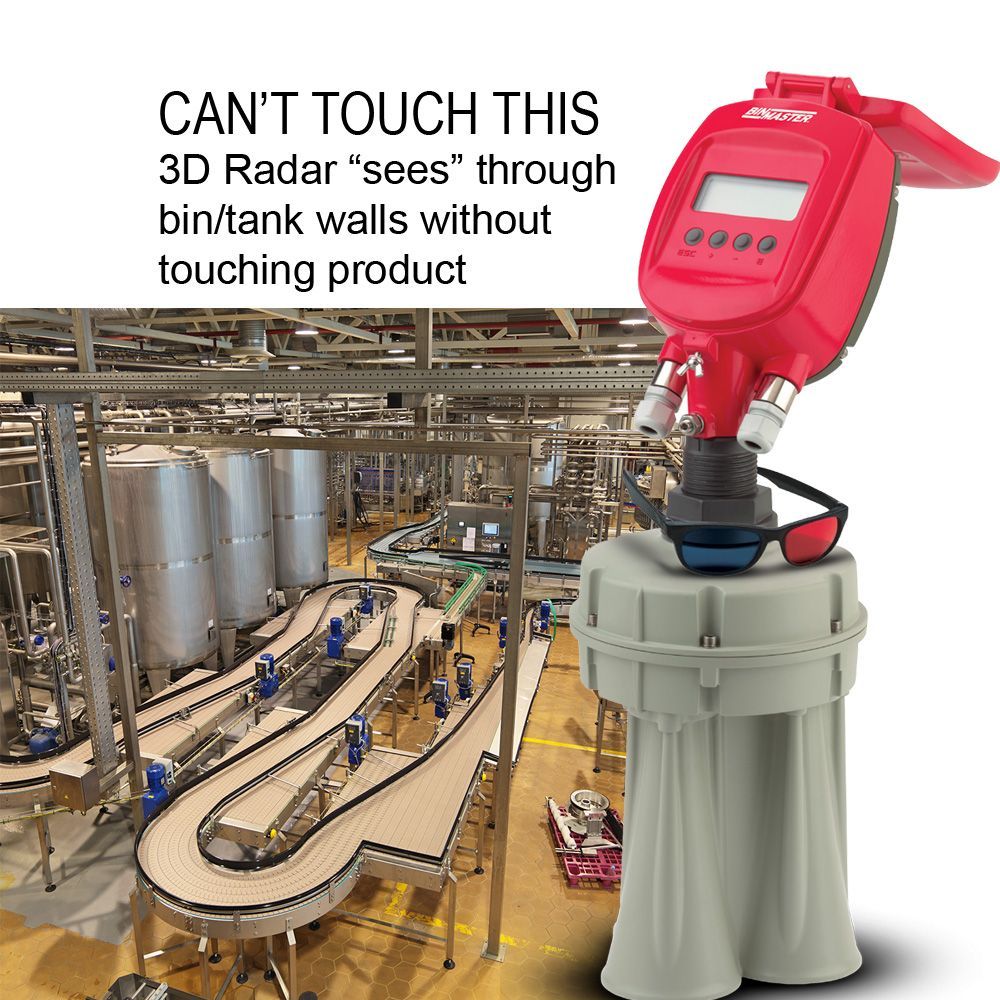SENSORS FOR FOOD PROCESSING
For more than a decade, the 3DLevelScanner has provided highly accurate level and volume measurements in challenging materials contained in bins, tanks, and silos. As the only sensor to measure and map the material surface, it sends pulses at a 70° beam angle, taking multiple-level measurements and accounting for uneven surface topography when calculating volume.
3D Vision software receives sensor data and reports the level of material detected, plus the average levels over time. For the MV and MVL models, a colorful graphical representation indicates where high and low spots exist in the silo.
3D scanners keep pushing boundaries and addressing concerns of increasingly complex food operations. This article shares a few of the newest innovations.
VIEW MULTIPLE SILOS, AND BINS ON A SINGLE SCREEN
MultiVision software for inventory visibility across an organization
Inventory management affects multiple departments across food processing organizations. Plant personnel need adequate inventory for production, purchasing needs to know what to order and when, and finance needs accurate valuation for financial statements.
To provide corporate-wide visibility, the optional 3D MultiVision software enables users to view data for multiple bins in a single window. Since it is Windows-based, it can be configured for 24/7 access via an organization’s Local Area Network (LAN).
MultiVision software can be used with all versions of the non-contact, dust-penetrating 3DLevelScanner, including the RL, S, M, MV, and MVL models. By clicking on a single bin, users can zoom in on detailed information about the material inside: such as minimum, maximum, and average levels. For the MV and MVL models, they can also see the 3D visualization of bin contents. The software allows multiple users at multiple locations to view bin level and volume data on a permissions basis.
3D MultiVision software makes it easy to share real-time bin data across the entire organization—or send reports to vendors using VMI—to improve purchasing, logistics, operational decisions, and financial management. With a user-friendly setup and intuitive operation, users can customize their screen to view all bins or a group of bins and color-code bins by material type. Users can set high- and low-level alerts to be notified when bins reach critical levels. Because the software is installed on the LAN, there are no third-party applications or data access fees.
DETECT AND ALERT TO CENTER OF GRAVITY DANGER
Prevent silo collapse or damage using 3DLevelScanners
Many powdered and solid substances used in food processing tend to clump, pile unevenly, and flow unpredictably from storage vessels. Not only does this make monitoring the volume of material inside the vessel challenging; but uneven disbursement of material can also take its toll on the storage vessel itself.
SEGMENTED SILOS MEASURING AVAILABLE
3DLevelScanners measures volume in wedge or pie-shaped silos
Operations burdened with managing inventory in pie-shaped silo segments can get accurate volume data thanks to special firmware for the 3DLevelScanner acoustic sensor. The scanner measures and models the topography of material contained in these unusually-shaped wedges. The firmware then applies the measured distances to a 3D model of vessel dimensions, converting it to a highly accurate volume measurement.
RETURN ON INVESTMENT
Accurate data about the dollar value of the material on hand helps reduce safety stocks, increase inventory turns, and pay for itself by freeing up cash that could be tied up in inventory. Additionally, buildup on the outer perimeter of the silo or along the walls can be detected, accounted for in inventory, and addressed by maintenance if needed. The same 3DLevel Scanner can be used for either segmented or round silos, making it a versatile choice over its long sensor life.








